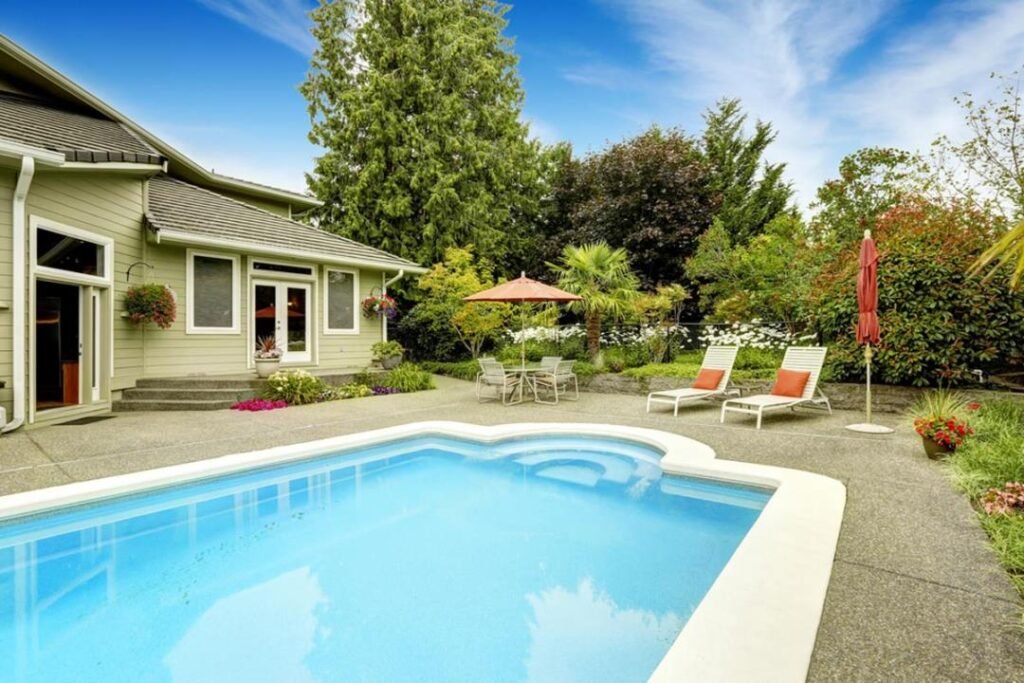Installing an inground pool is an exciting venture for homeowners seeking to create a personal oasis in their backyard. However, understanding the associated costs is crucial before diving into this significant investment. Inground pools can vary widely in price depending on factors such as pool type, materials, size, and additional features. By breaking down these costs, you can plan effectively and avoid unexpected expenses.
Types of Inground Pools and Their Costs
The first major factor influencing the cost of an inground pool is the type of pool you choose. There are three primary types: concrete, vinyl liner, and fiberglass. Concrete pools are the most customizable but often the most expensive, with installation costs ranging from $50,000 to $100,000 or more. Fiberglass pools typically cost between $30,000 and $60,000, offering a quicker installation process and lower maintenance over time. Vinyl liner pools are the most budget-friendly option, costing $25,000 to $50,000, but they require regular liner replacements, which can add to long-term expenses.
Each pool type comes with unique advantages and considerations. For example, concrete pools allow for creative shapes and features but may require more maintenance. Fiberglass pools have limited shape options but are durable and easier to maintain. Vinyl liner pools offer affordability but might not last as long as other options.
Excavation and Installation Costs
Excavation is one of the most significant upfront expenses. The cost of digging depends on your property’s soil conditions, accessibility, and the size of the pool. On average, excavation can cost between $5,000 and $15,000. If your yard has rocky soil or limited access for equipment, you may face higher expenses due to additional labor or specialized machinery.
Installation costs will also vary depending on the pool’s type and complexity. Custom features like waterfalls, tanning ledges, or a unique pool shape can increase installation expenses. Be sure to get multiple quotes from reputable contractors to compare prices and ensure quality workmanship.
Additional Features and Enhancements
The base inground pool cost often excludes additional features that can elevate your swimming experience. Popular enhancements include pool lighting, heating systems, automated covers, and water features like fountains or jets. Each of these can add thousands of dollars to your total cost. For instance, a pool heater might cost $2,000 to $5,000, while a high-quality pool cover can range from $1,500 to $4,000.
Landscaping is another cost to consider. Adding a pool deck, patio, or surrounding greenery can enhance the aesthetics of your outdoor space but may cost anywhere from $5,000 to $20,000 or more. These upgrades not only improve the visual appeal but also increase your property’s value.
Ongoing Maintenance Expenses
Owning a pool comes with recurring maintenance costs. Chemical treatments, cleaning, and energy usage can add up quickly. On average, homeowners spend $1,200 to $2,000 annually on pool maintenance. Concrete pools often require more upkeep, including resurfacing every 10 to 15 years, which can cost $10,000 or more. Vinyl liner replacements, needed every five to nine years, can cost between $2,000 and $4,000.
Investing in automated systems or professional pool cleaning services can reduce your maintenance workload but may increase expenses. Consider these costs as part of your long-term budget.
Permits and Insurance
Don’t overlook the administrative costs of installing a pool. Most municipalities require permits, which can cost $200 to $500 depending on local regulations. Additionally, you may need to update your homeowner’s insurance to include liability coverage for the pool. This can add $50 to $200 annually to your insurance premium, depending on your provider and policy.
Hidden Costs to Watch For
Unexpected costs can arise during or after installation. For example, if your yard requires grading or retaining walls to accommodate the pool, you may face additional expenses of $5,000 or more. Utility upgrades, such as increasing electrical capacity for pool equipment, can also add to your budget.
Plan for these contingencies by setting aside an extra 10% to 15% of your total budget. Doing so ensures that you won’t be caught off guard by unforeseen expenses.
Planning for Your Dream Pool
An inground pool can transform your backyard into a luxurious retreat, but it’s essential to understand the full range of costs involved. From the initial excavation to ongoing maintenance, each aspect contributes to the overall expense. By thoroughly researching options, obtaining detailed quotes, and accounting for hidden costs, you can make informed decisions and enjoy your pool for years to come.
Whether you’re seeking a simple vinyl liner pool or a custom-designed concrete masterpiece, proper planning will ensure that your dream pool becomes a reality without breaking the bank. Take the time to weigh your options, and don’t hesitate to consult with professionals to create a pool that fits your lifestyle and budget.
